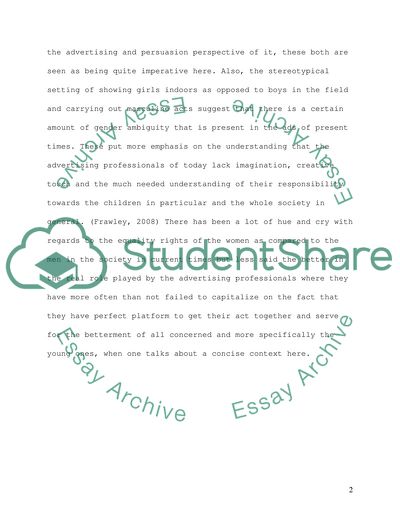Cite this document
(How the Media Affects the Development of Gender Schemas Article, n.d.)
How the Media Affects the Development of Gender Schemas Article. https://studentshare.org/media/1717196-how-the-media-affects-the-development-of-gender-schemas
How the Media Affects the Development of Gender Schemas Article. https://studentshare.org/media/1717196-how-the-media-affects-the-development-of-gender-schemas
(How the Media Affects the Development of Gender Schemas Article)
How the Media Affects the Development of Gender Schemas Article. https://studentshare.org/media/1717196-how-the-media-affects-the-development-of-gender-schemas.
How the Media Affects the Development of Gender Schemas Article. https://studentshare.org/media/1717196-how-the-media-affects-the-development-of-gender-schemas.
“How the Media Affects the Development of Gender Schemas Article”. https://studentshare.org/media/1717196-how-the-media-affects-the-development-of-gender-schemas.


